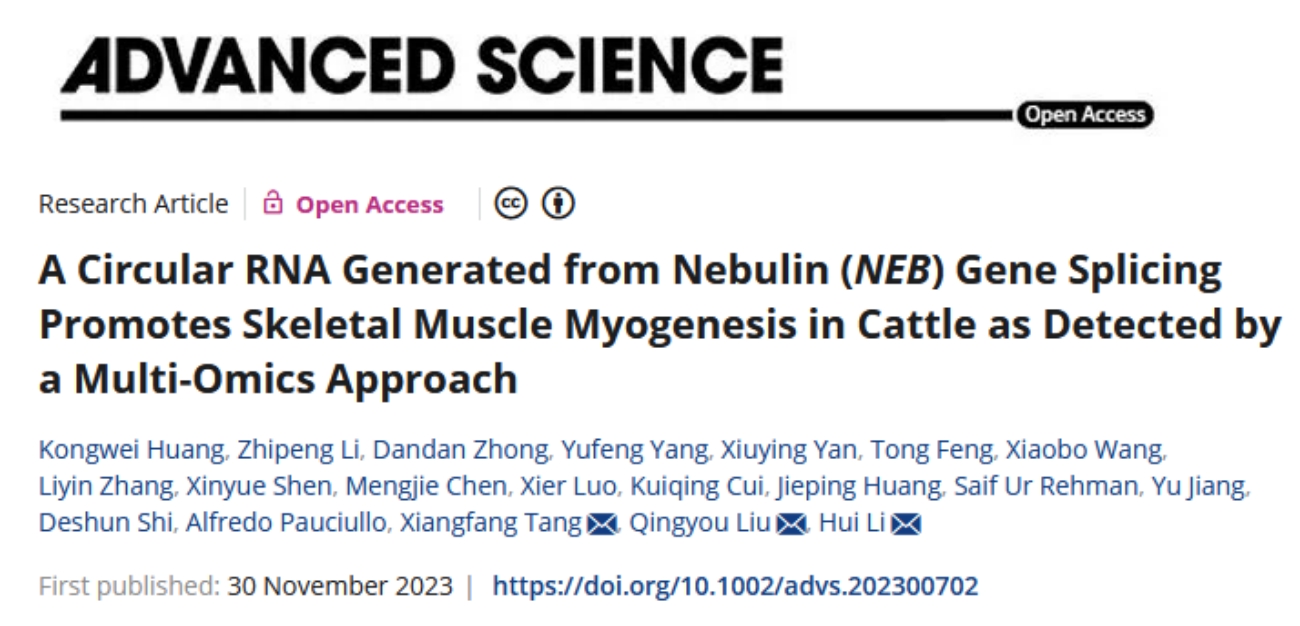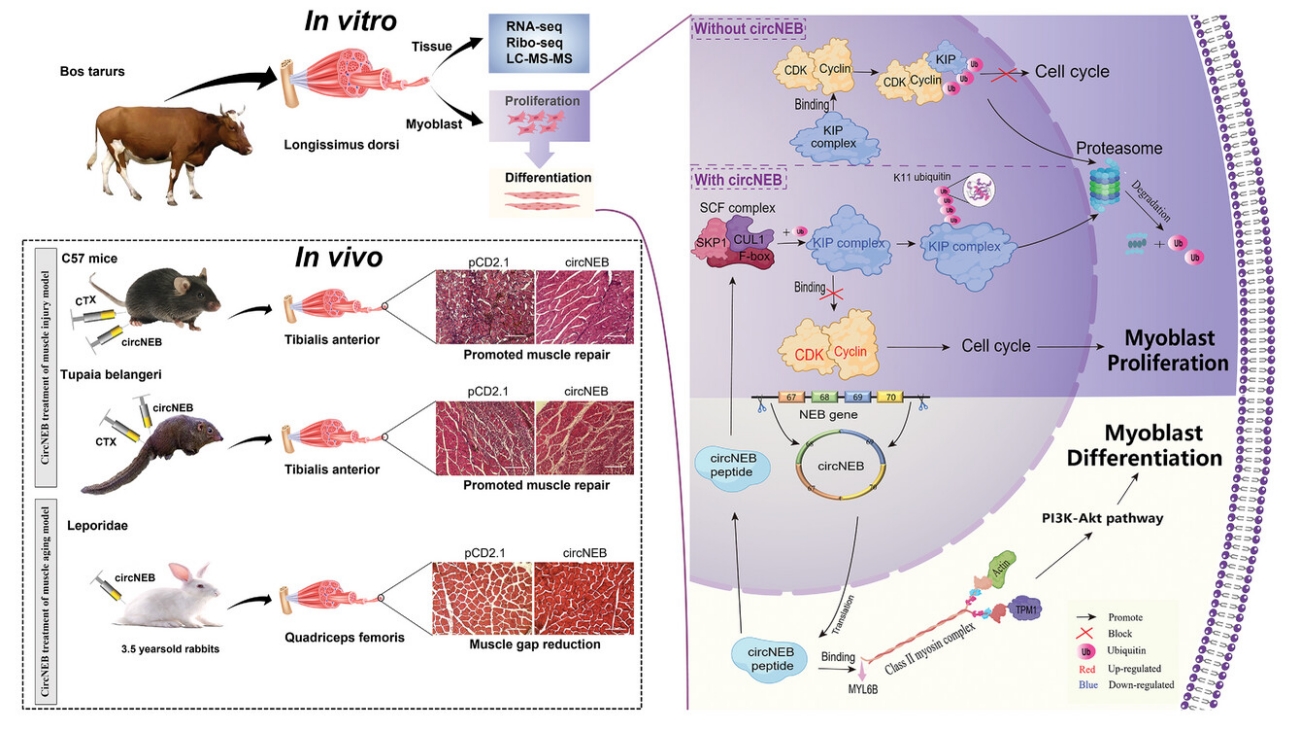Recently, the "Animal Cloning and Reproductive Regulation" team of the School of Animal Science and Technology of Guangxi University, together with Foshan University, Chinese Academy of Agricultural Sciences and Northwest A&F University, has made great research progress in the functional genome analysis of beef traits. It is published in Advanced Science titled A Circular RNA Generated from Nebulin (NEB) Gene Splicing Promotes Skeletal Muscle Myogenesis in Cattle as Detected Published by a Multi-Omics Approach.

This study integrated massive data such as bovine RNA-SEQ, Ribo-seq and small peptide group to construct the first coding map of non-coding RNA of domestic animals. Combined with functional studies, it was found that non-coding RNA circNEB could encode a muscle-specific peptide containing 907 amino acids, which could promote the proliferation and differentiation of myoblasts in vitro and induce muscle regeneration in vivo. Guangxi University is the first complete unit. PhD graduate Huang Kongwei, Assistant Professor Li Zhipeng and Doctoral Candidate Zhong Dandan are co-first authors. Associate Professor Li Hui, Liu Qingyou (Professor from Foshan University) and Researcher Tang Xiangfang from Chinese Academy of Agricultural Sciences are co-corresponding authors.

In recent years, Associate Professor Li Hui has devoted himself to solving difficult problems in cattle breeding by using advanced omics technology of genome and functional genome, and has achieved a series of original achievements. Based on 3D genomics, the annotated map of bovine 3D genome was drawn and a number of regulatory elements for meat traits were identified. Gene and molecular markers influencing bovine muscle development were obtained by functional genomics. Using genomics and epigenomics to construct a high-quality reference genome at chromosome level, the richest dataset of buffalo genetic diversity to date has been obtained. The research was published in international journals such as National Science Review, Molecular Therapy-Nucleic Acids and Journal of Agricultural and Food Chemistry.